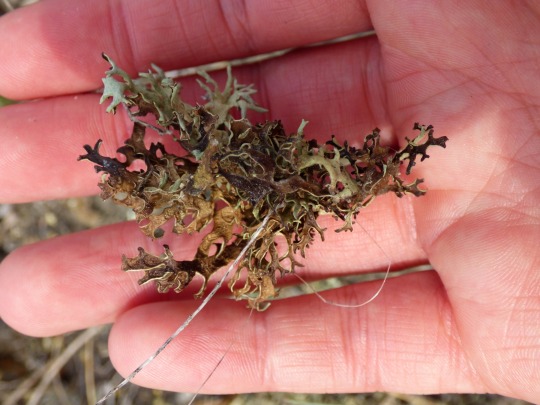Semi-professional naturalist. Plants, lichens, sometimes bugs. Boreal Forest | Parkland | Prairie
Don't wanna be here? Send us removal request.
Text
P.S. if you don't want to get caught printing the spicier ones at work, just print these blank photos and add the text manually at home.



(if you were like other girls in high school and don't own a typewriter I can't help you sorry)










howdy friends I am here to share the lichen valentines I made instead of working on my thesis. please print and give them to your friends and lovers.
for best results, put them inside a herbarium packet made of pink paper and write the address like a specimen label:

enjoy!
76 notes
·
View notes
Text










howdy friends I am here to share the lichen valentines I made instead of working on my thesis. please print and give them to your friends and lovers.
for best results, put them inside a herbarium packet made of pink paper and write the address like a specimen label:

enjoy!
76 notes
·
View notes
Text
species are literally a social construct scientists invented to cause ourselves pain and suffering
#- guy who saved all the Caloplaca IDs for last#you ever just sit up from the microscope and wonder wtf you're doing#anyway. grad school is fine I guess#species concept
29 notes
·
View notes
Text

tfw every specimen you thought was Caloplaca saxicola is just Rusavskia elegans.
(hi I'm alive and I did get into grad school which is why I've been neglecting this blog and will probably continue to do so. but please enjoy this image it took forever to make lmao)
#lichen#lichens#lichenology#old memes#science#biology#just lichenology things#Rusavskia elegans#Caloplaca saxicola
15 notes
·
View notes
Text
*sweating, shaking* bro please... you have to let me into grad school... bro I've already quit my job and it would be really embarrassing if I had to ask for it back... bro you gotta understand I bought a ticket for [redacted event] in [city where grad school is located] and it is non-refundable, bro! bro I have packed up my CD COLLECTION and my SCENTED CANDLES!!
15 notes
·
View notes
Text
*guy who just remembered he used to make educational posts on here voice*
Vagrant is a real lichenology term referring to lichens that grow unattached to the substrate and are free to roll around like tumbleweeds!
One of my favourite examples is Masonhalea richardsonii, which can be found in alpine tundra in the north. Here are some I found in the Yukon last summer:


forbidden seaweed snacks...



Hark! a vagrant!
#lichen#lichens#lichenology#Xanthoparmelia#vagrant lichens#Xanthoparmelia neochlorochroa#Masonhalea#Masonhalea richardsonii#on fleek in beaver creek
66 notes
·
View notes
Text


Hark! a vagrant!
66 notes
·
View notes
Text
girl help people on iNat are calling anything grey and lumpy Physcia stellaris again
#even if it's not remotely foliose#lichen#lichens#lichenology#inaturalist#girl help my post is incomprehensible
26 notes
·
View notes
Text

I think our dear friend Jonathan is afraid of lichens
24 notes
·
View notes
Text
Creeping bellflower (Campanula rapunculoides) is a nasty little fucker plant native to Europe and Asia that is extremely invasive in North America. It looks like this:


Flowering stems are often about 1m tall. And the basal leaves look like this:

Where I live, it's very common in alleyways and really anywhere there's a patch of unattended disturbed soil. I have some grudging respect for how hardy and tenacious this plant is, but unfortunately it is bent on world domination and must be thwarted.
It grows very deep stolons and tubers that break off and stay in the ground if the upper parts of the plant are pulled out, and it can regenerate from any root fragment left in the ground. Getting rid of it usually involves a lot of digging and sifting through the soil for root fragments (and then digging it out again the next year... and the next...). My latest strategy is to dig it out, then put cardboard down to hopefully smother any new growth.
Apparently the leaves and roots are edible, so when you're done digging them out you can enjoy a snack.
Not to be confused with native harebells (Campanula rotundifolia or alaskana), which are much smaller plants (20-50cm tall) with loose clusters of flowers rather than the spikelike raceme of C. rapunculoides. The native species are less common in urban areas.


34 notes
·
View notes
Text

#plants#botany#creeping bellflower#invasive plants#invasive species#campanula rapunculoides#old memes
34 notes
·
View notes
Text
actually nevermind I just remembered the City Nature Challenge is next weekend and I'm gonna wander the entire length of the ravine and be cured of all problems mental physical and spiritual
already regretting grad school and I haven't even been accepted yet
20 notes
·
View notes
Text
already regretting grad school and I haven't even been accepted yet
20 notes
·
View notes
Text
help how do I ask important people to please for the love of god respond to my emails in a timely manner, but like in a polite and non-passive-aggressive way
11 notes
·
View notes
Text
A poem
Some days I feel like Beowulf Some days I feel like Grendel Some days I have pea soup for lunch And think of Gregor Mendel
#not plants#beowulf#botany#gregor mendel#poetry#uhhh i swear i'll be back on the crunchy botany content when i go back to school
3K notes
·
View notes
Text
Back when I used to walk around my college in a corduroy blazer and slacks I didn't call it "dark academia" I called it "professor drag" and the purpose was to smoothly walk into parts of campus I wasn't supposed to access
#iconic#academia#uni#altho lets be real in the faculty of science u gotta be rocking those vaguely grimy fieldwork cargo pants and a 10-yr-old conference tshirt#topped with a choice fleece vest and Dad Shoes (TM) to really blend in
89K notes
·
View notes